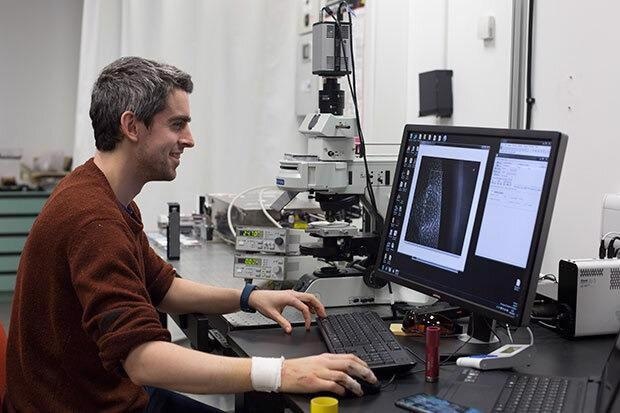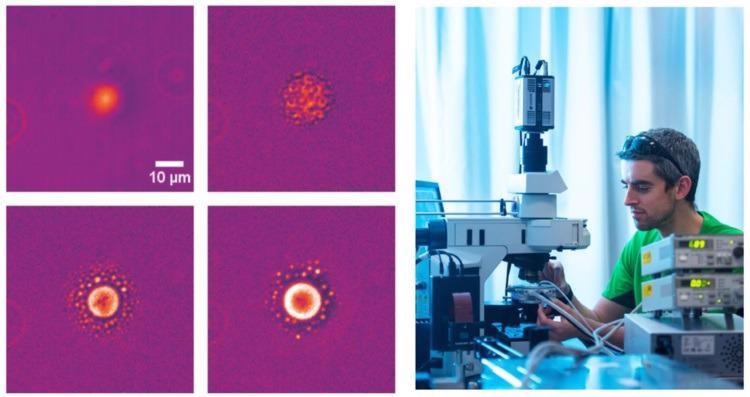An increasing understanding of how materials crystallize has transformed modern science and technology, from display technologies such as LCDs to solar panels and the analysis of biological samples to pharmaceutical compounds.
The crystallization kinetics of material, and the conditions at which they experience phase changes, such as temperature, have a significant impact on its final properties.
The right balance of amorphous and crystalline regions across a sample can be the difference between an inert thin film and an effective solar cell or the difference between the success and failure of a prototype drug.
Thus, there is continual research in order to enhance knowledge and better understand how to manipulate material crystallization.
Numerous studies have concentrated on a novel phenomenon known as ‘laser-induced crystal nucleation’ or ’laser tweezing,’ where a laser beam’s electromagnetic energy, combined with temperature control, can be utilized to drive phase changes or nucleation of new phases in a mixed liquid system.
A team of scientists was determined to understand how and why lasers activate crystallization and how variations in the properties of the laser could influence which crystal form is produced.
Researchers working in collaboration with Professor Klaas Wynne of The School of Chemistry at the University of Glasgow utilized Linkam’s THMS600 temperature-controlled stage to evaluate phase transitions in laser-induced nucleation and mixed liquid systems.
The main thesis under investigation was that there were ‘critical points’ concealed either in a single liquid or when two immiscible liquids are combined or split apart in response to temperature, where significant shifts occur in relative concentrations, and that at these ‘critical points’ laser light was able to amplify this effect and facilitate laser-induced nucleation.

Dr Finlay Walton working on the system with the Linkam THMS600 at the University of Glasgow. Image Credit: Linkam Scientific Instruments
The team assembled a phase-contrast microscope and laser set-up to carry out some early experiments. These first laser-induced phase separation (LIPS) experiments were performed on mixtures of nitrobenzene and decane at mole fractions and temperatures across a stable mixture.
When the laser was concentrated on the sample, a bright spot was observed under the microscope. This suggested that LIPS had taken place and that the fraction that was isolated had a greater refractive index and must therefore be rich in nitrobenzene. This was verified with the dye methylene blue and fluorescent detection.
Successive temperature-controlled experiments utilizing the THMS600 enabled the group to show how the LIPS effect greatly increases on cooling as the binodal (the key point at which two well-defined phases can coexist) is approached, and proximity of a critical point of liquid-liquid can be utilized by a laser-tweezing potential to incite concentration gradients.

(Left) LIPS and Nucleation (LIPSaN) experiments in nitrobenzene–decane at T = 23.9 °C with a 120-mW 785-nm focused laser, on for 30 s. When the laser is switched on a LIPS droplet forms, but nucleation only occurs once the laser is switched off. (Right) Finlay using the setup with a THMS600. Images Credit: Finlay Walton and Klaas Wynne
The group established that phase manipulation and nucleation can be correctly induced with a basic laser set-up. The results could have a resounding impact where the understanding of these important phenomena is concerned.
The LIPS experiments and relative theory not only describe the physics behind non-photochemical laser-induced nucleation but also propose new ways of potentially manipulating matter.
The Linkam stage integrated so well with our microscope – we have long-field objectives and the stage fitted perfectly into it. The temperature control was extremely good. We want to get really close to this critical point and so having control to 0.1 Kelvin is essential. The Linkam stage was so fast as well, we saw no discernible lag as we approached the target temperature – and the temperature that the stage indicated was the actual temperature, something that we haven’t always seen with other systems.
Dr. Finlay Walton, Research Assistant in Professor Wynne’s Group, The School of Chemistry, University of Glasgow
References
- Walton F, Wynne K. “Control over phase separation and nucleation using a laser-tweezing potential” 2018 Nature Chemistry 506–510 DOI: 10.1038/s41557-018-0009-8
- Walton, Finlay, and Klaas Wynne “Using optical tweezing to control phase separation and nucleation near a liquid–liquid critical point” 2019 Soft Matter 15.41 8279-8289 DOI: 10.1039/C9SM01297D

This information has been sourced, reviewed and adapted from materials provided by Linkam Scientific Instruments.
For more information on this source, please visit Linkam Scientific Instruments.